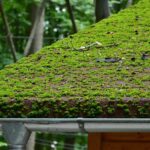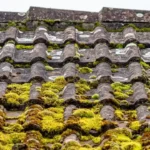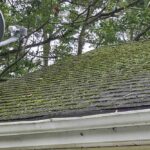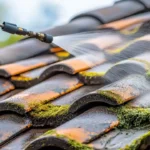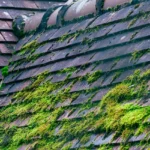Conducting a visual roof inspection is an essential task for homeowners who want to maintain the integrity and longevity of their home’s roof. In this guide, we will explore the steps involved in performing a thorough visual inspection, helping you identify potential issues before they become costly repairs. Understanding how to do a visual roof inspection can save you time and money while ensuring your home’s safety.

Why Visual Roof Inspections are Important
Regular roof inspections are crucial for spotting early signs of damage and wear. By identifying issues such as loose shingles, cracks, or leaks, homeowners can address them promptly, preventing further deterioration. These inspections also help in maintaining the overall value of your property.
Essential Tools for a Visual Roof Inspection
Before starting your inspection, gather the necessary tools. A pair of binoculars, a camera or smartphone, a flashlight, and a notepad for taking notes are all you need for a basic inspection.
Safety Precautions
Safety should be your top priority when conducting a roof inspection. Ensure you have a stable ladder, wear non-slip shoes, and, if possible, have someone assist you. Remember, it’s safer to inspect your roof from the ground whenever possible.
Step-by-Step Guide to Visual Roof Inspection
1. Inspect the Roof from the Ground
Begin by examining your roof from the ground using binoculars. Look for missing or damaged shingles, sagging areas, or debris accumulation. This step allows you to spot major issues without climbing onto the roof.
2. Check the Roof’s Perimeter
Walk around your home’s perimeter to inspect the roof’s edges, gutters, and downspouts. Ensure gutters are securely attached and free from debris. Examine the fascia boards for signs of rot or damage.
Clear drains regularly to prevent water damage.
3. Climb Up for a Closer Look
If it’s safe to do so, use a ladder to climb up and inspect your roof more closely. Look for cracked or curled shingles, algae or moss growth, and any other signs of wear. Make sure to check the flashing around chimneys and vents for gaps or corrosion.
4. Inspect the Attic
Don’t forget to check your attic for signs of leaks or moisture. A flashlight can help you spot water stains, mold, or damp insulation, indicating a potential roof leak.
When to Call a Professional
If you discover significant damage during your inspection or feel uncomfortable conducting a detailed check, it’s wise to call a professional roofer. They can provide a comprehensive assessment and recommend necessary repairs.
Roof inspection tips can guide homeowners in what professionals evaluate.
Maintaining Your Roof
Regular maintenance is key to prolonging your roof’s life. Keep your roof clean, remove debris promptly, and fix minor issues before they escalate. You can find useful tips on routine roof maintenance at Roof Crafters.
Choosing the Right Roof Cleaner
Selecting the best cleaner for your roof type is crucial. For composite shingles, visit cleaner options that suit your needs.
Preventing Roof Leaks
Preventing leaks, especially near chimneys, is a common concern. Learn more about leak prevention techniques.

FAQ Section
How often should I inspect my roof?
It’s recommended to inspect your roof at least twice a year, preferably in spring and fall, to catch any seasonal damage early.
What should I do if I find mold in my attic?
If you discover mold, it’s important to address the source of moisture and consider professional mold remediation services to ensure thorough removal.
Can I perform a roof inspection myself?
Yes, you can perform a basic inspection yourself. However, for a detailed assessment, especially if safety is a concern, hiring a professional is advisable.
Conducting regular visual roof inspections is vital for maintaining your home’s health and value. By following these guidelines, you can effectively spot and address potential issues, ensuring your roof remains in excellent condition for years to come.
This article contains affiliate links. We may earn a commission at no extra cost to you.




